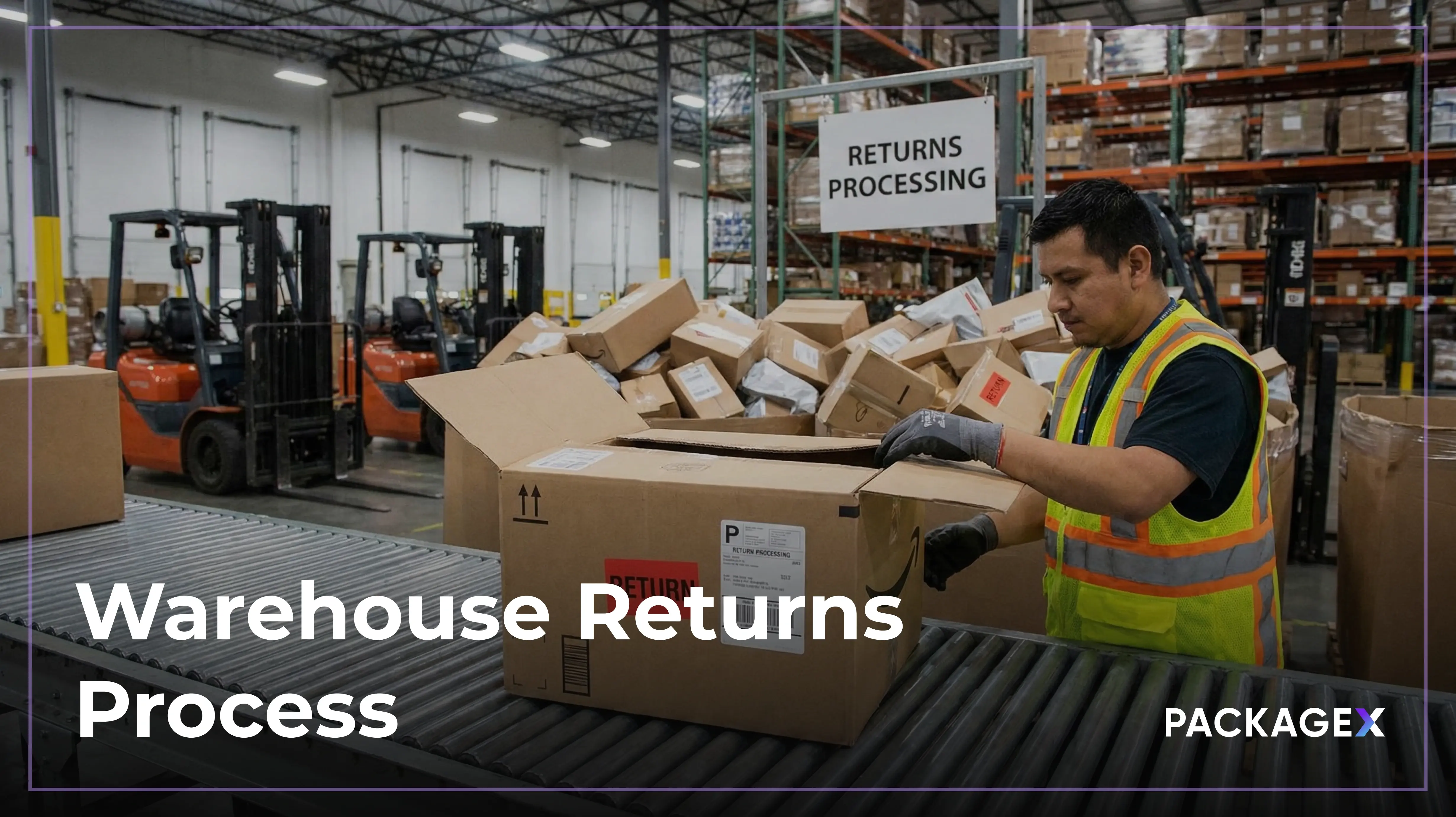Minimum Order Quantity (MOQ) is a common practice in supply chain management, especially for e-commerce businesses purchasing raw materials or finished goods from manufacturers. While you would ideally want to order just enough inventory to meet customer demand, many suppliers require a MOQ. This means companies must buy a set amount of stock as mass production is more cost-effective for suppliers. Although a brand's desired inventory level may not always align with the MOQ, there are ways to navigate this challenge. Ready to understand how MOQ works? Let’s explore its importance and how to make it more manageable to optimize your inventory and supplier relationships.
What is MOQ?
Minimum Order Quantity (MOQ) is the smallest number of units a customer needs to buy to place an order. You’ll often see this term in eCommerce, especially when dealing with wholesalers or manufacturers. MOQs are pretty standard in retail and can benefit both sellers and manufacturers. For retailers, they help manage inventory and ensure profitability, while for manufacturers, they make production more efficient by ensuring larger orders.
Minimum Order Quantity Example
MOQ for wholesale or retail partnerships means that if a brand has a minimum order requirement, the wholesale or retail partner must purchase at least 75 units or $700 worth of products in a single order.
In some situations, suppliers may be flexible and willing to adjust the MOQ. For long-term partnerships between suppliers and retailers, it is often possible to negotiate and modify the MOQ.
There are no universal standards for MOQs, as each supplier and business operates with different requirements and terms.
Types of MOQ
Supplier-Set MOQs
These are minimum order quantities established by suppliers and presented to the brands considering purchases. Suppliers set MOQs to ensure that they don't lose money on production runs.
For instance, If a supplier makes candles and a boutique orders only 15 caps, the production costs (materials and labor) could total $400. Selling 15 candles at $7 each would result in only $105 in revenue, which is still far below the cost of production.
Here’s the benefit. If the boutique orders a larger quantity, such as 40 caps, the supplier can buy raw materials in bulk, reducing the production cost to $150. By selling 40 caps at $5 each, the supplier makes $200, which covers production costs and generates a profit.
Brand-Set MOQs
Brands can also set MOQs, usually for wholesale or retail partnerships. This type of MOQ is less common but is used to ensure that the purchasing quantity is sufficient to justify the production and handling costs.
What Does MOQ Mean for Inventory?
Minimum order quantity (MOQ) has a significant impact on inventory management for both sellers and buyers. For sellers, high MOQs require them to maintain larger stock levels, which can lead to challenges in managing inventory effectively. Your working capital gets tied up, and valuable warehouse space is consumed. While a high MOQ can lower administrative costs due to less frequent ordering and the opportunity for bulk savings, it also increases the risk of holding obsolete inventory, especially for fast-moving items like electronics.
On the other hand, low MOQs allow suppliers to operate with less inventory on hand, resulting in higher inventory turnover. However, this approach can increase your administrative costs due to more frequent orders. If you’re a supplier, you may also face the risk of running out of stock during unexpected spikes in demand, potentially leading to lost sales.
For buyers, MOQs influence purchasing decisions. If a buyer cannot meet a supplier's MOQ, they may need to seek alternative suppliers with lower requirements or pay a surcharge. High MOQs can complicate cash flow and storage space usage, while low MOQs reduce the financial burden of carrying excess inventory.
Ultimately, businesses must consider MOQs when developing their inventory strategies. They should aim to build a plan around MOQs that remain fair and sensible. Keeping this in mind leads to efficient use of storage space and capital. Understand the balance between high and low MOQs to optimize inventory management and ensure that stock levels align with customer demand.
Pros and Cons of MOQs
Is There a Minimum Order Quantity Formula?
Calculating your Minimum Order Quantity (MOQ) can be simplified into four easy steps. Here’s how:
- Determine Demand: Understand how much stock you plan to sell. Analyze factors like product type, competition, and seasonality. If your forecast aligns closely with your supplier's MOQ, you’re in a good position. However, if there’s a significant difference, be prepared to negotiate.
- Calculate Break-Even Point: Identify the per-unit cost at which neither profit nor loss occurs. For example, if a supplier's cost is $0.30 per unit, your MOQ should be set above this to ensure profitability.
- Understand Holding Costs: Factor in the costs associated with storing your products. Some items may be more expensive to store than others, which could influence your decision on how much inventory to maintain.
- Set Your MOQ: You can establish your MOQ by considering demand, break-even point, and holding costs. For instance, if you expect to sell 200 units and need to cover your costs, determine a price point that allows for profitability and adjust your MOQ accordingly.
Minimum Order Quantity (MOQ) Optimization Tips
Encourage Higher Spending
Implement free shipping thresholds, such as “Spend $30 for free shipping,” to boost conversions. Offering discounts for bulk purchases also encourages higher spending.
Simplify SKUs
Streamline your product offerings to avoid excessive SKUs, making inventory management easier and reducing costs.
Boost Inventory Turnover
Remove slow-moving stock and consider promotions or bundles to move products and maximize your investment quickly.
Be Open to Alternative Suppliers
Negotiate with manufacturers or work with wholesale distributors who can offer lower quantities if MOQs are too high.
Negotiate Creatively
Be open in conversations with suppliers. Inquire about mixing products to meet MOQs or check for surplus stock from canceled orders.
Use Technology
Use ERP and MRP platforms to automate inventory management and track supplier MOQs, helping you adjust purchasing habits based on real-time data.
Simplify MOQ Implementation with PackageX
The platform offers enhanced visibility and automation across the entire supply chain, which can be incredibly useful for managing and optimizing Minimum Order Quantities (MOQs).
Minimum order quantity (MOQ) is just one aspect of inventory management that you must balance. Companies of all sizes need to align their suppliers' MOQs with their goal of maintaining tight inventory control to meet customer demand efficiently without overspending.
Fortunately, our inventory management software can simplify this process. It provides insight into your stock levels, locations, and needs, making it easier to place accurate orders. Additionally, the software can alert you when items are running low, allowing you to filter inventory by supplier and ensure you meet MOQs without acquiring unnecessary stock. This way, you can manage inventory confidently and cost-effectively. Request a demo now to learn how we can make inventory management better for you.
{{returns-webinar}}
FAQs
What is an example of a minimum order quantity?
Let’s understand MOQ through an example. Imagine a wholesaler selling widgets for $200 each. If the supplier has an MOQ of 100 units, it means you’d have to order at least 100 widgets, which would cost you $20,000.
What is EOQ and MOQ?
Economic Order Quantity (EOQ) helps you figure out the perfect amount of inventory to keep in stock. So you can avoid overspending on storage while making sure you don’t run out of products. On the other hand, Minimum Order Quantity (MOQ) is the minimum amount a supplier or seller requires you to purchase at once. Both help in managing inventory, but in different ways.
What does MOQ stand for?
MOQ stands for Minimum Order Quantity.




